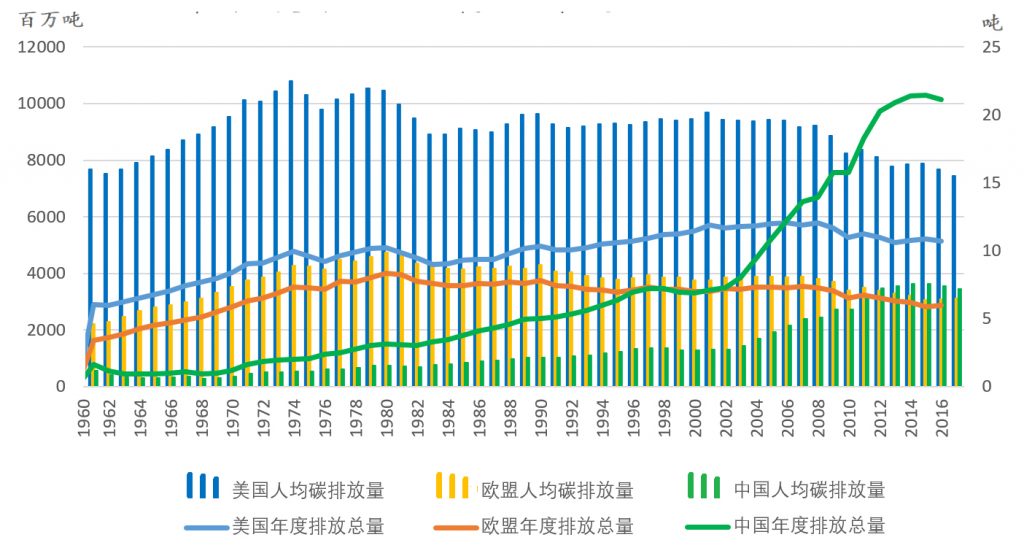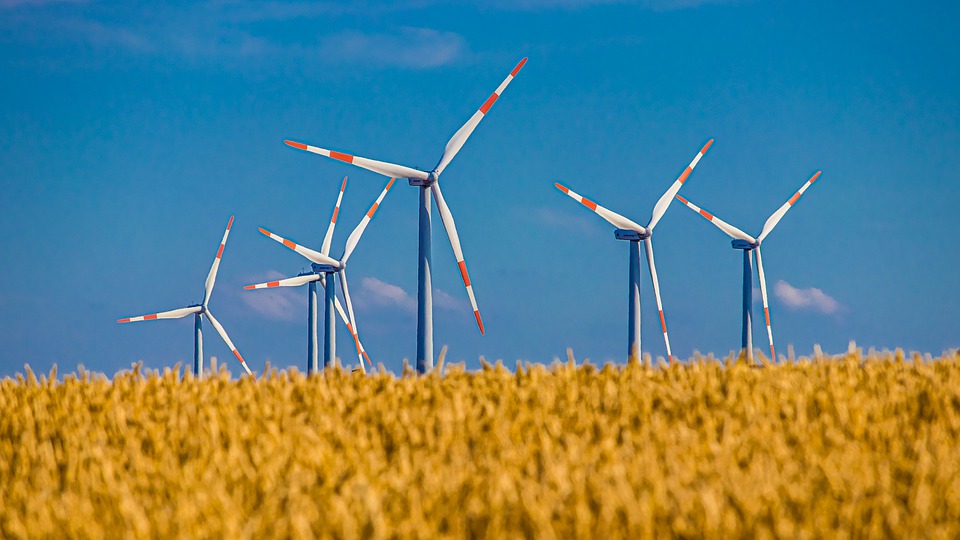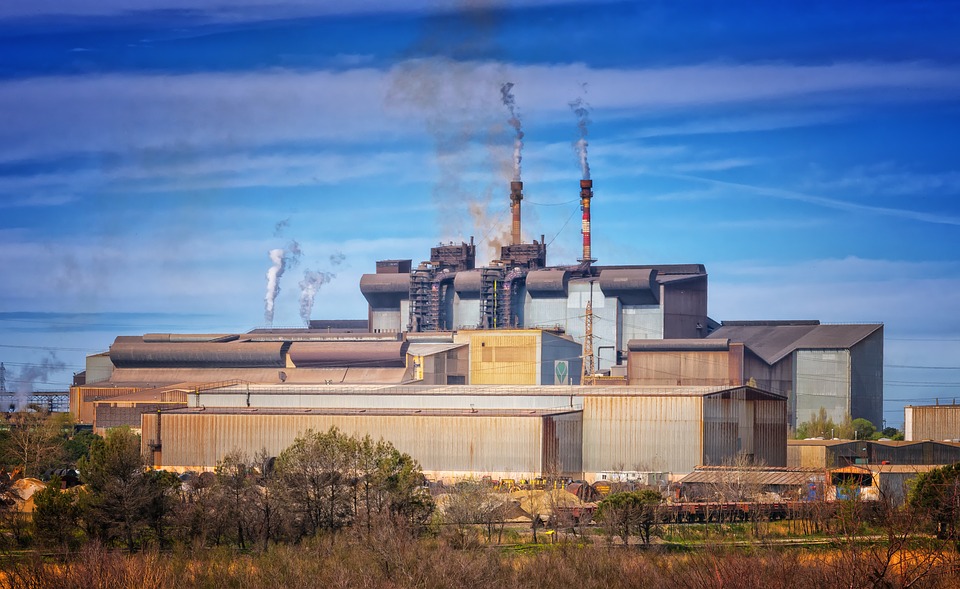Author: Zeng Lu
Climate change is a global challenge facing mankind. Looking around the world, which countries have made carbon neutrality commitments? How will major countries promote carbon neutrality?
Total words2934About7minutes
Climate change is a global challenge facing mankind. Climate change intensifies extreme weather such as droughts, heat waves, heavy rains, and floods, and triggers serious consequences such as rising sea levels and loss of biodiversity. Climate change caused the Earth's temperature to rise by 1°C in 2017 above pre-industrial levels. At current emissions rates, global temperatures will catastrophically rise by more than 3°C by the end of the century. If left unchecked, climate change will have a comprehensive impact on the earth and ultimately endanger human survival and development.
Since 1995, the United Nations has held annual climate change conferences. At the 2015 Paris Climate Conference, nearly 200 parties reached the Paris Agreement to make arrangements for global actions to address climate change after 2020: to control global temperature rise within 2°C by the end of this century, and seek to further control it within 2°C. Within 1.5℃. According to the IPCC report, the world needs to achieve carbon neutrality around 2070 to achieve the goal of not exceeding 2°C warming; it needs to achieve carbon neutrality around 2050 to achieve the 1.5°C goal. The United Nations Framework Convention on Climate Change requires contracting parties to notify long-term greenhouse gas emission targets by mid-century by 2020. Since 2018, governments around the world have pledged to achieve carbon neutrality by around 2050.
What is carbon neutrality, net zero emissions, climate neutrality?
carbon neutralIt refers to the balance between carbon dioxide emissions caused by human activities and man-made carbon dioxide absorption within a certain period of time.
net zero emissions(Net zero emission) refers to the balance between greenhouse gas emissions caused by human activities and man-made emission absorption within a certain period of time.
climate neutral(Climate neutral) refers to a state in which human activities have no net impact on the climate system, which means striking a balance between greenhouse gas emissions, emission absorption, and the biophysical effects of the earth in a specific region.
The carbon neutral goal only considers carbon dioxide, the net zero goal includes all greenhouse gases such as carbon dioxide and methane, and the climate neutral goal considers all greenhouse gases and other impacts such as radiative effects.
Many countries regard carbon neutrality as an important opportunity to seize the opportunity for economic development in the new round of technological revolution. 137 countries have pledged to achieve carbon neutrality by around 2050, accounting for 73% of total global carbon emissions. Among them, Bhutan and Suriname have achieved carbon neutrality. Uruguay has committed to becoming carbon neutral by 2030. Finland, Austria, Iceland, Germany and Sweden have pledged to become carbon neutral between 2035 and 2045. 124 countries have set carbon neutrality targets by 2050. China, Ukraine, Kazakhstan and other countries have pledged to achieve carbon neutrality by 2060.
Countries’ carbon neutrality commitments have different legal effects. Carbon neutrality targets have been confirmed through legislation in Sweden, Denmark, France, Hungary, New Zealand and the UK. Five countries including Canada, South Korea, and the European Union have put forward legislative proposals. 24 countries, including Brazil, China, Germany and the United States, have written climate targets into official policies. A further 99 countries have yet to confirm their carbon neutrality commitments through official procedures.
Carbon dioxide emissions of the United States, the European Union, and China (1960-2016)

U.S. to achieve net-zero emissions no later than 2050
The United States led the world in carbon emissions before 2005. In 2019, the total amount of greenhouse gas emissions in the United States was 6.56 billion tons of carbon dioxide equivalent, ranking second in the world. The transportation and power industries are the main sources of carbon emissions in the United States, accounting for 29% and 25% of total emissions respectively. Carbon emissions from the U.S. power industry have declined in recent years. In 2016, transportation replaced electricity as the industry with the highest emissions. In addition, sectors such as construction, manufacturing, and agriculture are also important sources of carbon emissions.
In April 2020, the Biden administration committed that the United States would achieve net-zero emissions no later than 2050. Biden sees climate action as a huge opportunity for a green transition and job creation, announcing a cross-agency climate change strategy, leading the U.S. to rejoin the Paris Agreement, and federal agencies to comprehensively review major environmental regulations. The Environmental Protection Agency proposed regulations to phase out hydrofluorocarbons, and the Senate passed reinstatement of methane emission standards. In March this year, the United States released a green jobs plan, announcing the creation of millions of jobs in climate-friendly fields such as clean energy, climate adaptation, and green transportation. The Biden administration's climate policy focuses on infrastructure, clean energy, green jobs, etc. In April this year, Biden announced a goal of reducing U.S. carbon emissions by 50%-52% by 2030 compared with 2005 levels. During his campaign, Biden promised to invest US$2 trillion to combat climate change. In May this year, the Biden administration's first 2022 budget proposed US$36 billion in climate investment.

EU to be climate neutral by 2050
The EU’s carbon dioxide emissions peaked at 4.7 billion tons in 1979 and then entered a downward trend. In 2018, the EU's total carbon emissions dropped by 23.2% compared with 1990. In 2019, the EU's total carbon emissions were 3.32 billion tons, ranking third in the world. Electricity, transport, construction, industry and agriculture account for approximately 95% of total EU emissions.
In December 2019, the European Commission released the "European Green New Deal", proposing the goal of Europe becoming the world's first climate-neutral continent by 2050. The Green New Deal is the EU's new growth strategy, which aims to build the EU into a fair, prosperous, efficient, green and competitive economy. The Green New Deal includes a package of climate action initiatives and legislation focusing on clean energy, sustainable industry, buildings, farm to fork, eliminating pollution and sustainable transport. The Green New Deal will be supported by a green investment plan totaling €1 trillion, funded by the EU budget, the EU Emissions Trading System, the public and private sectors, and joint financing from European countries. In September 2020, the European Commission proposed a climate goal to further reduce net greenhouse gas emissions by at least 55% by 2030. In April 2021, the European Council and the European Parliament reached a provisional agreement on European climate law, paving the way for climate legislation.

China strives to achieve carbon neutrality by 2060
China’s carbon emissions were once significantly lower than those of the United States and the European Union. After China joined the World Trade Organization in 2002, carbon emissions accelerated with economic development. In 2007, China surpassed the United States to become the world's largest emitter of carbon dioxide. In recent years, China's green and low-carbon transformation has achieved results, and the growth rate of carbon emissions has slowed down, but its global share continues to increase. In 2019, China's carbon dioxide emissions were 10.17 billion tons, accounting for 28% of the world's total emissions. Electricity, manufacturing, industrial processing, transportation, and agriculture are China's main sources of emissions. At present, China's per capita carbon emissions are 57% of the United States, close to the level of the European Union.
Last September, General Secretary Xi Jinping promised at the United Nations to strive to peak carbon emissions before 2030 and strive to achieve carbon neutrality before 2060. As the world's largest emitter, China's carbon neutrality goal is of great significance to China's low-carbon transformation and long-term low-carbon development strategy, as well as global climate governance. In December last year, the Central Economic Work Conference listed "doing a good job in carbon peaking and carbon neutrality" as one of the key tasks in 2021. It is required to accelerate the adjustment and optimization of the industrial structure and energy structure, promote coal consumption to peak as soon as possible, vigorously develop new energy, accelerate the construction of a national energy use rights and carbon emission rights trading market, and improve the dual control system of energy consumption. In June 2021, China's special envoy for climate change Xie Zhenhua said that relevant departments are formulating policies, measures, roadmaps and timetables to promote carbon peaking and carbon neutrality. On July 16, China’s carbon market was officially launched and its first online transaction was completed, marking significant progress in China’s response to climate change. To achieve the goal of carbon neutrality, China's new climate investment demand is expected to reach approximately 139 trillion yuan.

Climate change is a common challenge facing all mankind, highlighting the interdependence among countries and different stakeholders around the world. Only by strengthening cooperation among countries can we jointly face and overcome challenges. The 26th United Nations Climate Change Conference to be held in Glasgow, UK, in November this year is expected to be an important opportunity for global cooperation to address climate change.
First published: NGO Observation
references
https://www.world-energy.org/article/14500.html
https://www.carbonsink.it/en/news/what-is-the-role-of-the-private-sector-in-the-fight-against-climate-change
https://www.wri.org/insights/4-charts-explain-greenhouse-gas-emissions-countries-and-sectors
https://www.wri.org/insights/interactive-chart-shows-changes-worlds-top-10-emitters
https://www.macrotrends.net/countries/CHN/china/carbon-co2-emissions
https://www.macrotrends.net/countries/USA/united-states/carbon-co2-emissions
https://www.macrotrends.net/countries/EUU/european-union/carbon-co2-emissions
https://news.sina.com.cn/c/2021-06-02/doc-ikqciyzi7278133.shtml
https://www.diva-portal.org/smash/get/diva2:1380853/FULLTEXT01.pdfhttps://finance.sina.com.cn/tech/2021-06-11/doc-ikqcfnca0546161.shtml
https://www.cenews.com.cn/newpos/sh/gd/202106/t20210603_976533.html
https://www.mckinsey.com/business-functions/strategy-and-corporate-finance/our-insights/on-target-how-to-succeed-with-carbon-reduction-initiatives
https://finance.sina.com.cn/money/future/roll/2020-11-08/doc-iiznctke0283567.shtml
https://mp.weixin.qq.com/s/Ka-oASXVGbUBbjUtyRRRlQ
Past review
- Understanding Climate Change and Carbon Neutrality in Six Charts
- Three White Papers Reveal Trends in China's Development Cooperation
- New Trends in U.S. Development Cooperation Revealed by the 2022 Budget Proposal
- Understanding the Global Landscape of COVID-19 Vaccines in Six Charts
- Seven Principles Likely to Influence Germany's Post-Election Development Cooperation Policies

